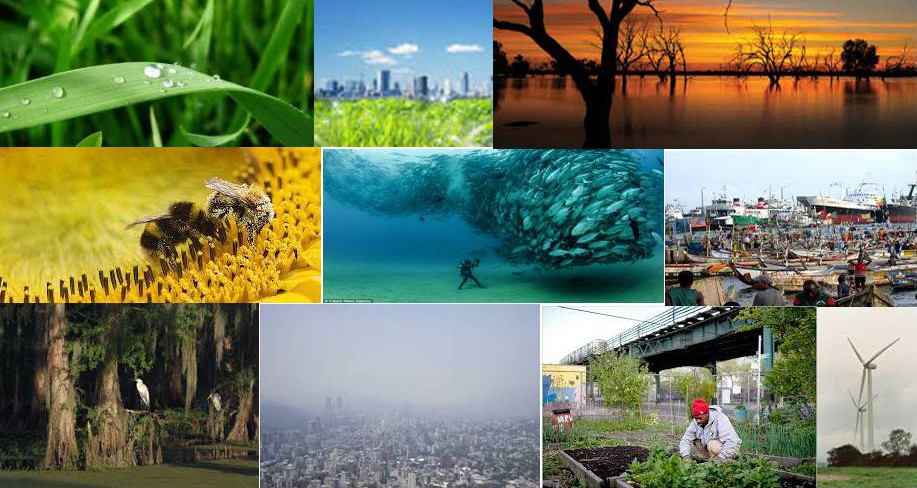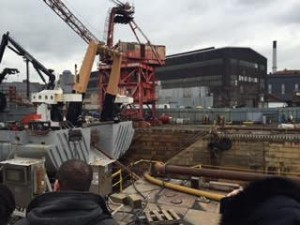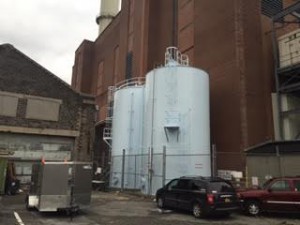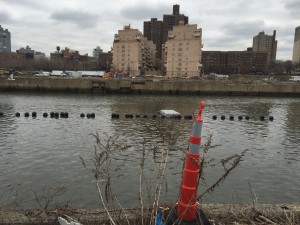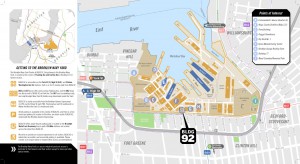Brooklyn Waterfront Research Center at City tech
Category Archives: Readings, films, guest lecturer readings
Brooklyn Navy Yard
I was very excited to go to the Brooklyn Navy Yard. It seemed to be a very mysterious place, as it is closed off to the general public and maps of New York City display the BNY as taking up quite a bit of space.
The BNY is a self sufficient industrial park that was originally a Naval base of operations. Many of the structures were maintained and repaired to resemble their original architecture. Despite maintaining the older look, the BNY has made many technological advances and this new tech is all over the place. There were large almost outdoor facilities for large scale manufacturing of modular homes. There are solar powered trash compacting garbage cans throughout the facility. The BNY also has its own power plant, which runs the facility using a mix of steam and electric, to the point that excess energy is sold to ConEd.
There is a Dry Dock, which allows for repairs of the portions of ships that are usually submerged. There were oyster beds that are being used to determine if water can be filtered naturally, to help with the NYC waste problem. Also, there are tons of companies that are producing innovative technology.
All in all, I was very happy with the visit, I only wish we could have seen more.
Photos: Dry Dock, Power Plant and historical repairs
Brooklyn Navy Yard
My overall experience at the Brooklyn Navy Yard was one of the most interesting ones that I ever had as a New York resident for many years. The Brooklyn Navy Yard gives all of us a great lesson on how efficient and creative people can be when they are put together in a closed-knit community. Because for me the Navy Yard is a small community with a lot of organization that can achieve all its financial and environmental goals in the best possible way with less damaging effects on our ecosystem. The tour also taught me how important it is that if all of New York implements the systems for energy production they can change this city for the better and why not be an example for the whole nation and even the whole world. The term sustainability is being used a lot nowadays but if you visit the navy yard you will come to understand what it means and how better our lives can be if the whole city got together and put the navy yards methods to practice. I think this visit was a memorable one and very educational for a person who wants to explore other methods for finding other energy efficient production methods.
Readings for Wed. 2/24 are posted
Please see posted links to readings for 2/24; Read articles, bring to class and be prepared for discussion.
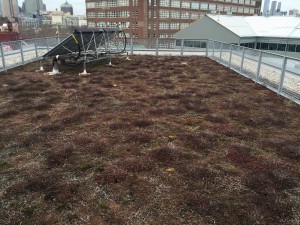 The extensive green roof system, which has plants (seedum plants) that are low maintenance and are used to absorb a lot of the water from the rainfall. The solar panel to the left of the picture is part of a solar thermal system which provides hot water to the building.
The extensive green roof system, which has plants (seedum plants) that are low maintenance and are used to absorb a lot of the water from the rainfall. The solar panel to the left of the picture is part of a solar thermal system which provides hot water to the building.
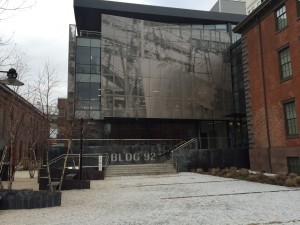
This is the outside of building 92. You can clearly see the large metal screen covering the building which keeps the building from getting too hot by reflecting the sunlight but allowing some light to get through the holes for visibility. The image is taken from an old picture of the USS Brooklyn as it was left in 1936.
Post your reflections, photos, of Sustainable Industries tour
Map and directions to Brooklyn Navy Yard
- Itinerary: Tour Wed. Feb. 17, 12 – 1:30PM
- 12pm-1:30pm – Brooklyn Navy Yard Sustainable Architecture & Industry Tour
- 1:30pm-2pm – Independent exploration of the exhibits at BLDG 92
- Meeting Place: The Brooklyn Navy Yard Center at BLDG 92, located at the corner of Carlton Ave & Flushing Ave, Brooklyn, 11205 – see below for directions.
- IMPORTANT: If you are using GPS or an online mapping service to find BLDG 92, enter “Flushing Ave and Carlton Ave, Brooklyn, NY” and not the street address, as there is only one address for the entire 300-acre Yard. Do not enter “63 Flushing Ave” or just “Brooklyn Navy Yard,” as you will end up in the wrong location.
- Do not attempt to enter the Brooklyn Navy Yard through any of the other security entrances, as you will be turned away. There is no public parking inside the gates of the Navy Yard, with the exception of individuals with a handicapped parking sticker.
- If you plan on taking the subway, the closest stops are York Street (F) and High St (A/C). Alternative transportation options, as well as driving, biking, or ferry directions are here.
- Driving Directions: The Brooklyn Navy Yard is accessible from the Brooklyn-Queens Expressway (I-278), either via the exits for Tillary St (exit 29B), Flushing Ave (exit 30 eastbound), or Wythe Ave/Kent Ave (exit 31 westbound).
- Street parking is available adjacent to BLDG 92, or there is a free municipal parking lot one block south of BLDG 92 along Park Ave, underneath the Brooklyn-Queens Expressway.
- If you get turned around for any reason, please call Turnstile Tours at (347) 903-8687.
- Bring a camera. There are great views all over the Yard, but please note that photographs taken on this tour may only be used for non-commercial or personal purposes. Using photographs for commercial purposes without acquiring permission from theBrooklyn Navy YardDevelopment Corporation is strictly prohibited. Please also note that photography of Steiner Studios, the power plant, and the interiors of tenant buildings (without permission), is not allowed.
- Dress comfortably and appropriately for the weather. Wear comfortable shoes and make sure to dress appropriately for the weather, as we will be getting off the bus at several points during the tour. We give our tours rain or shine, and there will be no refunds due to weather conditions unless Turnstile Tours cancels the tour out of concern for safety. In this case, we would call you no later than 9am on the day of the tour to reschedule.
- Special needs & accessibility. We strive to provide an inclusive and welcoming experience on all of our tours. If you have any special needs, please don’t hesitate to email us at info@turnstiletours.com so that we can make appropriate accommodations.
Weekly readings
Reading assignment for Wednesday Feb. 10
Read the following articles, 1. Economic Doctrines and Approaches to Climate Change Policy by Atkinson and Hackler, (pgs. 1 – 9; 15 – 16; 22 – 23 and 33 – 36) and 2. Why Emissions Trading is More Effective than an Carbon Tax by the International Emissions Trading Association and comment/answer any two of the following questions by 11:59 pm Feb. 8.
Atkinson-etal-2010-econ-climate-change_theories
Why Emissions Trading is More Effective Than a Carbon Tax_session1
In pages 1 – 9, the authors discuss their views of how Neoclassical, Neo-Keynesian and Innovation Economics would design economic policies to address the issue of climate change. Discuss your answers to any two of the following questions:
1. According to Atkinson and Hackler, what do neoclassical economists view as the most effective policy in addressing the challenges of climate change?
2. What assumptions does neoclassical economics make about human behavior? Are these assumptions realistic? Explain
3. According to Atkinson and Hackler, what are two or three arguments made by neo-Keynesian economics? What policy does neo-Keynesian economics see as most effective in addressing the challenges of climate change? Describe
4. What are the principal problems the authors have with both neoclassical and neo-Keynesian economic proposals for resolving climate change? Clearly explain.
5. The authors discuss their theory of “Innovation Economics.” What reasons do authors cite as to why Innovation Economics offers a more effective framework for addressing the economic realities of the 21st century.
6. Describe the policy advocated by the IETA and why they believe this policy to be effective.
